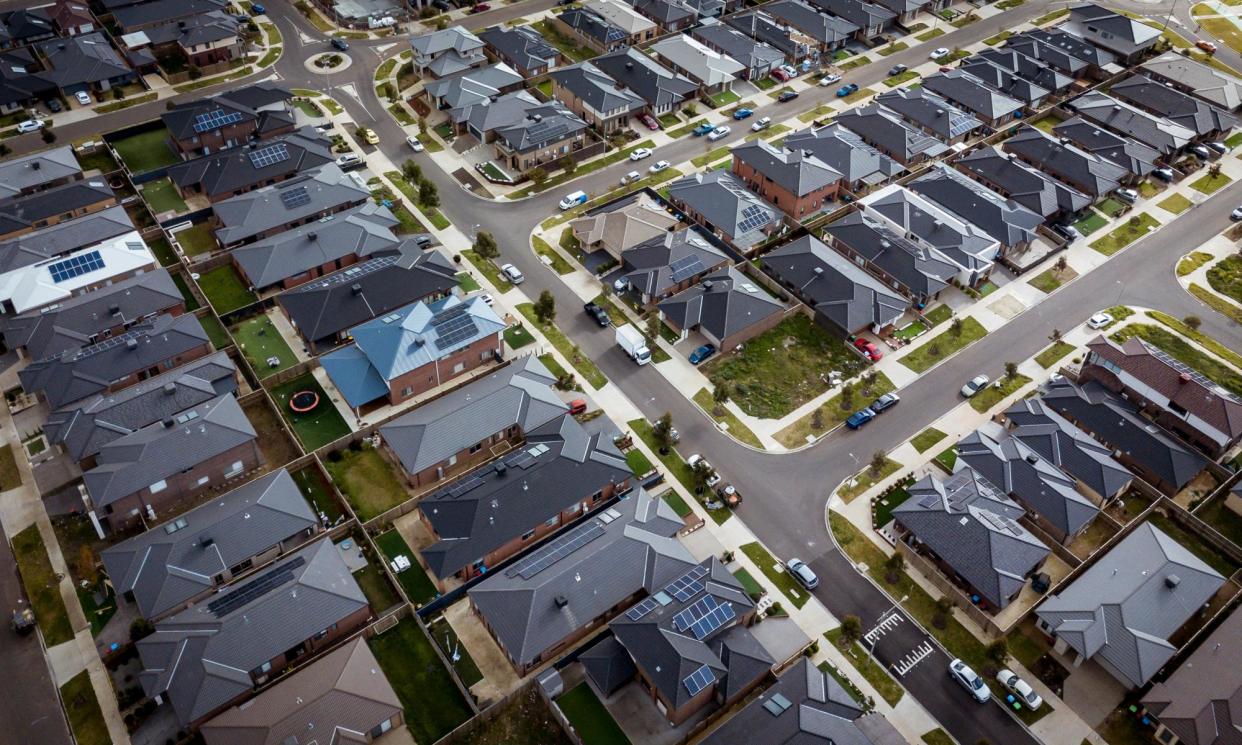Victoria to set new housing targets for every council in the state

Every council in Victoria will be required to meet targets for new housing under a state government plan to increase the supply of homes and increase densities over the next 30 years.
The planning minister, Sonya Kilkenny, is expected to announce on Thursday that the government would begin consultation with local councils and community groups on Plan Victoria, its growth strategy for the state.
Kilkenny said the document would set out how to improve housing affordability and choice through to 2051 – when the state’s population is expected to exceed 10 million – and include targets for councils, outlining “where and how many homes will need to be built”.
It followed recommendations from several planning experts, including the government’s independent infrastructure adviser, to introduce housing targets for local government areas.
Infrastructure Victoria’s chief executive, Jonathan Spear, said targets would ensure new homes were built in the most suitable areas, encourage a variety of home types and sizes, and provide confidence to developers.
Related: Scrap first home buyers grant and build 60,000 social homes by 2034, Victorian inquiry recommends
But he said they would only be effective if accompanied by other policies to “stimulate the supply and diversity of new homes”, such as streamlined planning approvals, better design standards and expanded zoning for low-rise apartments in established suburbs.
“These options can work together to support local government progress in meeting targets and increase home choices for moderate income households in established suburbs of Victoria’s major cities,” Spear said.
In New South Wales, councils have been required to reach housing targets for several years. But the NSW government recently dismantled the Greater Cities Commission after being underwhelmed with the housing targets it recommended.
Only eight out of 33 local government areas in Sydney will reach their housing targets by 2025-26, but councils deny they were solely to blame.
Jonathan O’Brien from Yimby Melbourne said any Victorian targets would have to be accompanied by “carrots and sticks” to ensure councils follow them.
“Currently, there’s no process by which councils can be held accountable for things that don’t happen. They’re only held accountable for things that do,” he said.
“What we’ve seen over the last sort of 30 years is a housing shortage come up. That is the sum total of a whole bunch of things that haven’t happened that councils haven’t been accountable for.”
Guardian Australia has also reported on the NSW targets being skewed by the construction of new dwellings, even when they have reduced the available housing stock by displacing multiple properties.
Marcus Spiller, from SGS Economics and Planning, said it was a “positive step” that the Victorian government would consult councils before announcing its own targets.
“What we tend to see in Australia is a much greater top-down approach with state governments saying to local governments, ‘This is the way it’s going to be, stand aside please’,” he said.
“State governments feel that they can fix everything from the centre … but the truth is that local governments understand their neighbourhoods much, much better than the state.”
Kilkenny said 2.24m new homes would need to be built by 2051 – including 425,600 across regional and rural areas – to ease housing pressure.
Related: Victorian government strikes deal with Greens to pass vacant homes tax reforms
This builds upon the 800,000 homes the government wants built over the next 10 years, as outlined in its housing statement, released in September.
“A new plan for Victoria will set out what our towns, cities and regions look like as we get on with building 800,000 new homes over the next decade and millions more into the 2050s – close to jobs, public services and transport,” Kilkenny said.
“We’re travelling to all corners of the state to hear from Victorians how we can address important issues like housing affordability, jobs, infrastructure and sustainability and develop a new vision for the state.”
Plan Victoria will supersede Plan Melbourne, which was released in 2017 and last updated more than four years ago.
Plan Melbourne set a goal of reining in urban sprawl and concentrating 70% of growth in existing Melbourne suburbs. The government has conceded it has failed to reach this goal.


